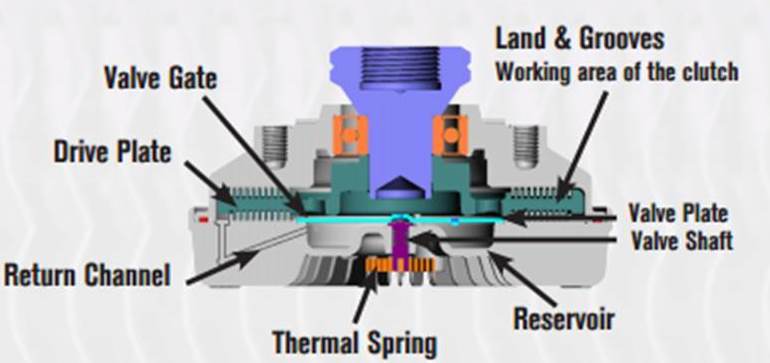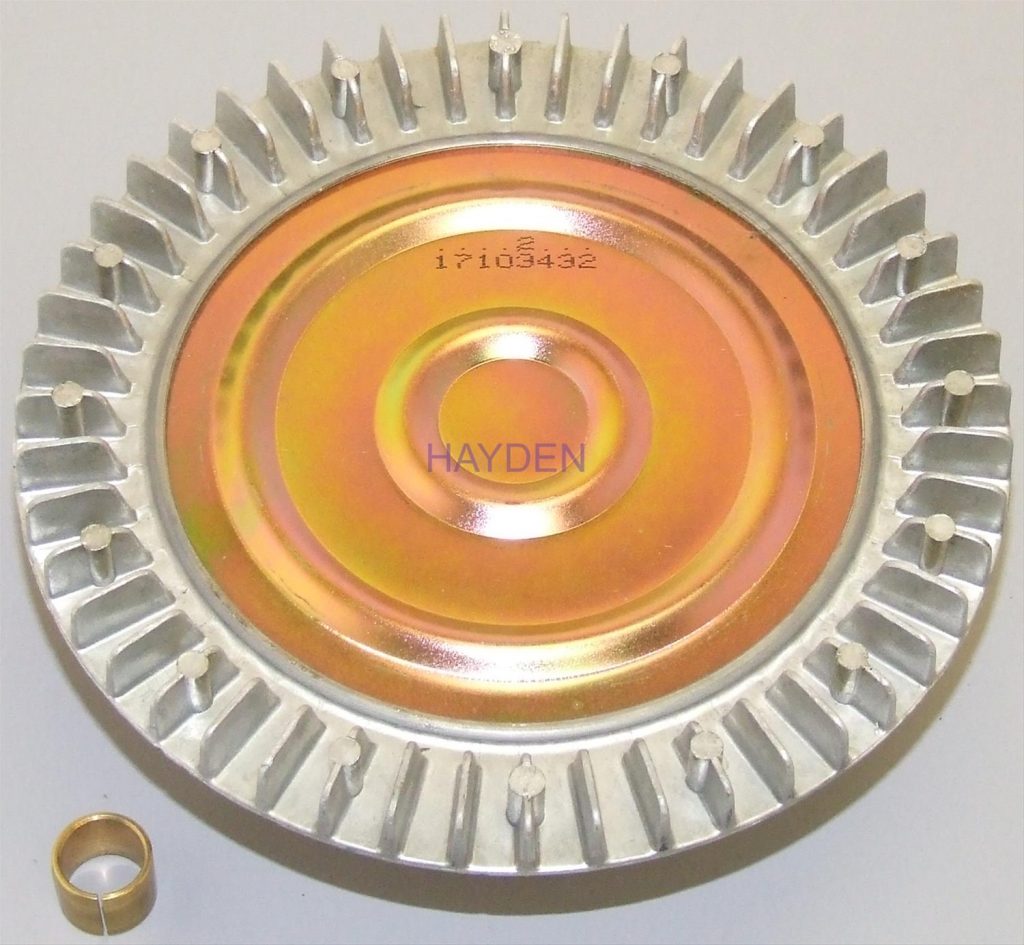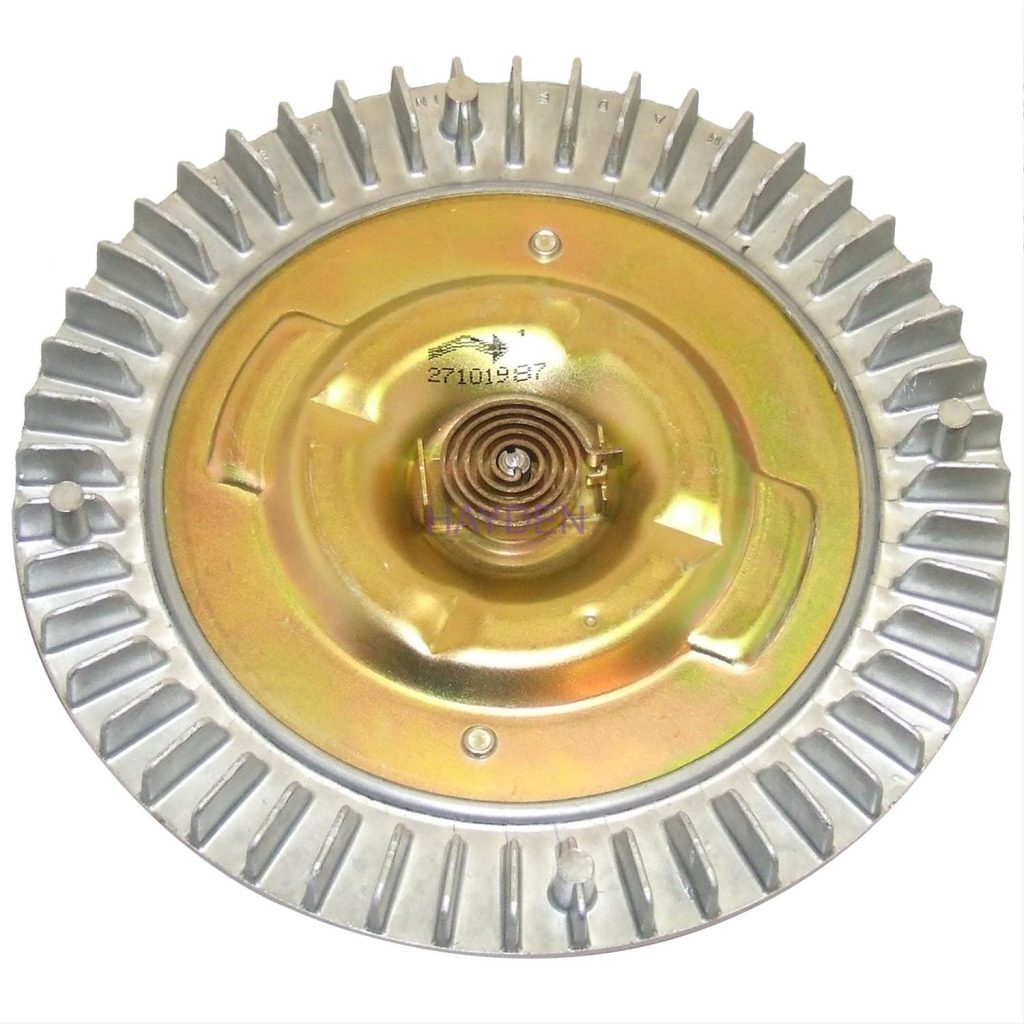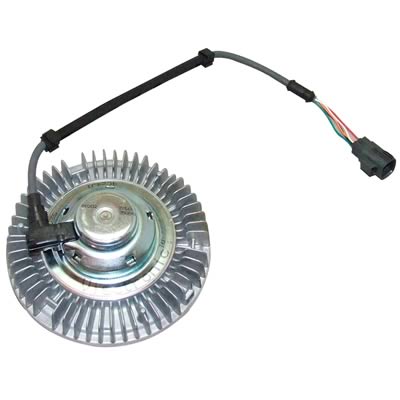what is necessary to install 2015 hemi in 2005 3/4 ton truck youtube
When you retrieve of an automotive cooling arrangement, the commencement affair that probable comes to heed is your radiator…or perhaps your cooling fan. The oft-disregarded fan clutchdoesn't become a ton of credit or attending, merely it's an essential piece of the cooling equation in many vehicles. Information technology helps your cooling system operate effectively and your engine operate efficiently.
But permit's start at the beginning.
What is a Fan Clutch?
A fan clutch is a temperature-controlled coupling between the h2o pump shaft and the fan which allows the fan to exist operational at low speeds and disconnected at higher speeds. This allows the engine to operate more efficiently by removing the load that the fan places on information technology.
So how does it work?
Information technology really depends on the style of fan clutch y'all choose.

Types of Fan Clutches
The main types are non-thermal, thermal, and electronic — all of which use a silicone fluid to engage and disengage your fan.

A non-thermal clutch provides a steady menstruation of cooling air but is always engaged, so it offers lower fuel savings than a thermal-style fan clutch. However, non-thermal clutches are a lower-cost option than thermal-way clutches.

The speed at which a thermal fan clutch spins a fan depends largely on the verbal fan you choose. On the Height Racing website, for case, you lot'll discover three different types of thermal fan clutches from Hayden alone:
Standard-Duty Thermal Fan Clutch: This design turns the fan at 60-seventy percent of the water pump shaft speed when engaged, and 20-30 percentage when disengaged. It's made for fans with a lighter pitch.
Heavy-Duty Thermal Fan Clutch: This fan style turns the fan at 70-90 percent of the shaft speed when engaged for increased cooling. When disengaged, it turns the fan at 25-35 percent. It's used with deeper-pitch fans (2 1/2″ of pitch), and works well with higher operating rpm.
Severe-Duty Thermal Fan Clutch: Astringent duty thermal fans plow the fan at eighty-90 percent of the shaft speed when engaged and 20-30 per centum when disengaged. Information technology'south used with deeper pitch fans and has a larger working surface to provide cooler running and longer life expectancy.
Electronic – Viscous EV Fan Clutch Performance

Like all components, fan clutches will wear out and need replaced.
Signs of Worn Fan Clutch
According to Hayden, here are some signs your fan clutch might need replaced:
- Fan spins excessively when engine is stopped (three or more than times when hot engine is shut off).
- Poor A/C operation at idle or low vehicle speeds.
- Fan speed does non increase when engine is hot.
- Fan speed does not increment until engine is excessively hot.
- Fan bract tip moves more than 1/4-inch front to back.
- Fan turns roughly or does non plow at all.
- Excessive fan noise at all speeds due to failed bearing.
- Vibration that increases with engine speed.
- Leaking fluid or oily build upward around the bearing or thermal jump.
These problems are ofttimes caused by a bad bearing, which may be seized or have excessive play, or by a worn or loose thermal spring.
Armed with this information, you lot tin identify a bad fan clutch and replace it with the proper aftermarket pick.
delatorrepeetruse.blogspot.com
Source: https://www.onallcylinders.com/2016/11/10/understanding-fan-clutches-time-replace/
0 Response to "what is necessary to install 2015 hemi in 2005 3/4 ton truck youtube"
Post a Comment